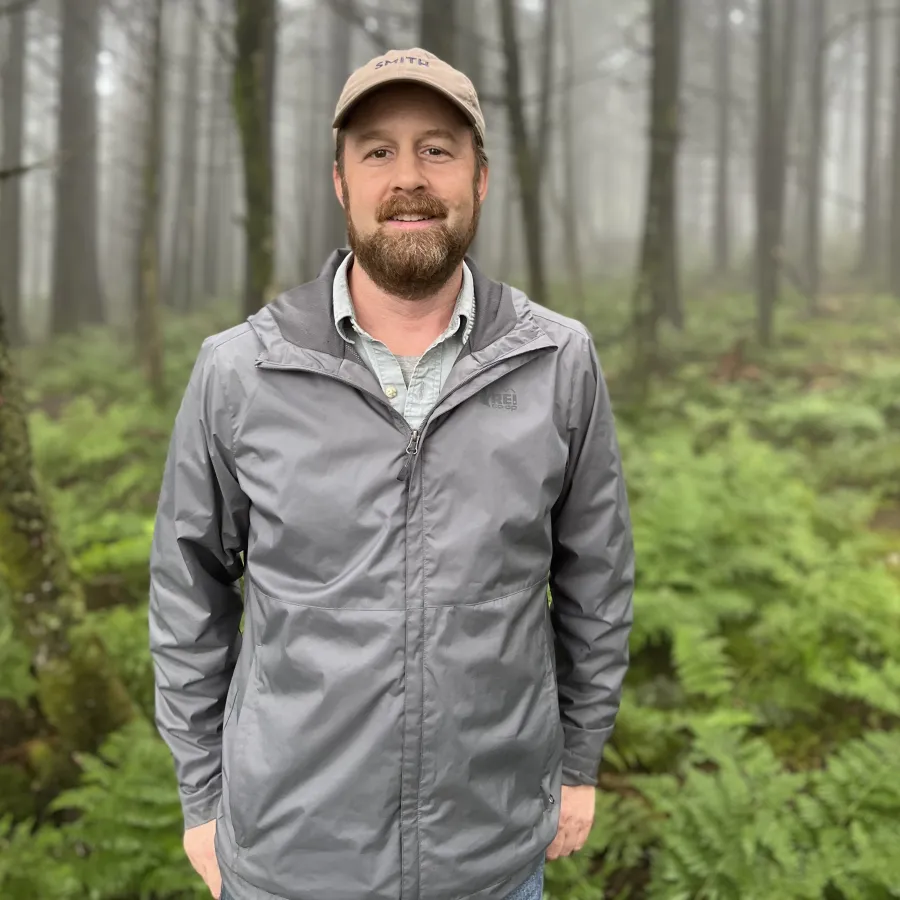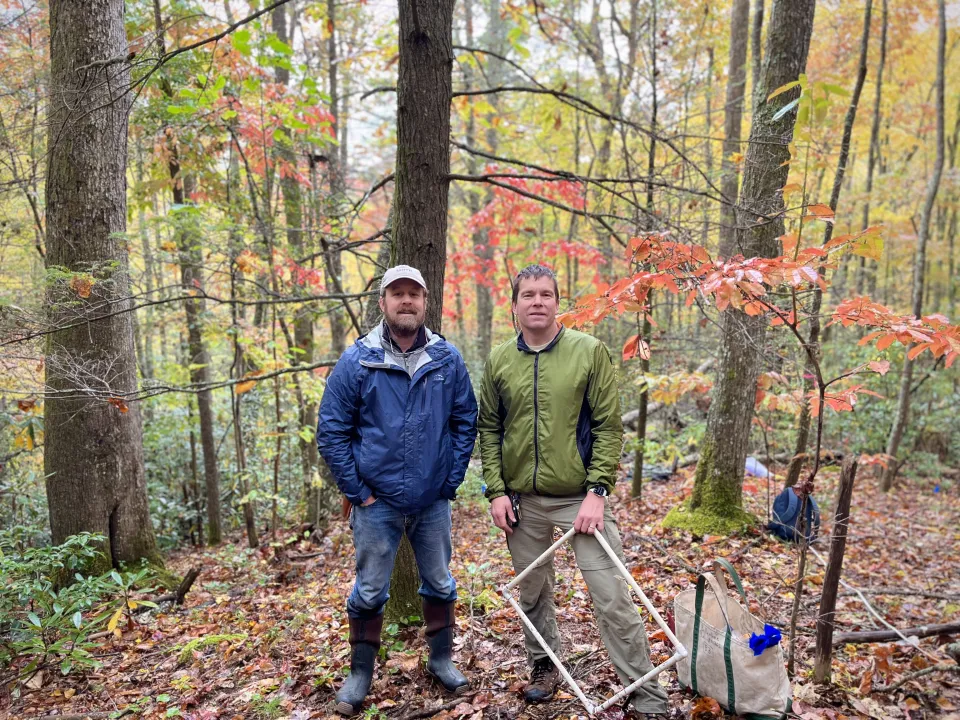A Mission to Save Species
CEEDS Research
Associate Professor Jesse Bellemare aims to preserve plant life threatened by climate change.
Published July 10, 2024
Jesse Bellemare’s fascination with plants and ecology goes back decades, perhaps to his membership in the New England Wild Flower Society in junior high school. Years later, while doing fieldwork at Harvard Forest in central Massachusetts for his masters’ thesis, he developed a particular focus on the forest ecology of New England. Bellemare’s thesis project looked at former 19th century agricultural fields that had been abandoned and then recolonized by forest plants. While these reclaimed areas looked like forests, filled with oak, maple and birch trees, they were fundamentally different from undisturbed forests.
“In many cases,” Bellemare says, “there's a lag in the full redevelopment of plant biodiversity in the understory of the forest.” Meaning, the big trees may have returned, but the smaller plants that lived below them had not. Some types of plants, including trilliums and other wildflowers, don’t have a mechanism to disperse their seeds longer distances and move them to a new location. This inability of some plants to move “was making these post-agricultural forests less diverse than intact forests or old growth forests. Even with 100 years, [those plants] weren't able to move 100 feet,” he says.
Now an associate professor of biological sciences at Smith, Bellemare is still thinking about how plants move, albeit on a much larger scale. His current focus is on several rare species that live within limited geographic areas in the forests of the southeastern United States. Unlike in New England, where native plants tend to be common, geographically-widespread species, the southern plants’ habitats and geographic ranges are small, located mostly in mountainous areas like the southern Appalachian Mountains. When those habitats begin to shift or shrink due to climate change, the plants are put at immediate risk.
With funding from the Center for the Environment, Ecological Design and Sustainability (CEEDS) and in conjunction with staff from the Smith College Botanic Garden and the MacLeish Field Station, Bellemare set out to investigate. The first species, Magnolia fraseri or mountain magnolia, had not been known to be endangered. But when Bellemare and his Botanic Garden colleague John Berryhill went to the core of the species’ small range in a western Virginia park in 2021, they could see immediately that the tree was only thriving and successfully reproducing in higher elevation—and cooler—forests on the mountain slopes. In contrast, populations at lower, warmer elevations had adult trees from decades ago, but few seedlings or saplings from recent decades. Eventually, as the climate continues to warm, the mountain magnolia will run out of room to escape climate change by retreating upslope—what has been called “the escalator to extinction” by conservation biologists.
Jesse Bellemare, left, and John Berryhill in the field in October 2023.
One common solution to preserve endangered plant species is to dry and freeze their seeds for long-term storage in a seed bank. But the seeds of some species, including magnolias, oaks, and rhododendrons, can’t tolerate this treatment. Only by saving the tree in a living “conservation collection” can the species be preserved. To this end, Bellemare and his collaborators at the Botanic Garden have been working to develop a genetically-diverse conservation collection of mountain magnolia here in the cooler climates of western Massachusetts. Their project of planting mountain magnolias in a former agricultural field at MacLeish Field Station was explored in a Fall 2023 article in the Smith Alumnae Quarterly.
Bellemare’s other focus is the Carolina rhododendron, a rare species that makes its home on mountaintops in North Carolina. What makes the rhododendron’s situation in the face of the changing climate more complicated is its symbiotic relationship with mycorrhizal fungi that lives in the soil where it grows. These rhododendrons tend to grow in nutrient-poor, “stressful soils,” according to Bellemare. What allows them to thrive in this challenging environment is “a specialized type of mycorrhizae that can extract nutrients from nutrient-poor soil.” Having two codependent species makes their reaction to climate change more challenging. “That extra layer of constraint might raise the possibility that you might occasionally get a seed going 100 miles, but there won't be a partner there and it's for naught,” Bellemare says.
Bellemare’s question was whether the rare Carolina rhododendron could survive by relying on the mycorrhizal fungi of a different plant in the same family, such as the widespread mountain laurel. “There's just very little that's known about how specialized those partnerships are,” he says. Through a series of experiments with seed germination and inoculations with different mycorrhizal fungi, Bellemare and his team learned that the Carolina rhododendron could indeed partner with mountain laurel mycorrhizae, “a relief,” Bellemare says. Currently Carolina rhododendron seedlings with mycorrhizae from mountain laurel at MacLeish are being propagated in the Botanic Garden and, when they are grown to size, will be planted at MacLeish. Down the line, Bellemare hopes to “develop conservation collections of rare rhododendrons from the eastern U.S. at the MacLeish Field Station or on campus as an insurance policy for these species as well.”
Bellemare is excited that his recent collaborations with the Botanic Garden, MacLeish, and CEEDS have led to conservation measures that “in the long term may have the biggest consequences for the future of these species and preserving biodiversity. There’s a direct pipeline now between the research and setting up collections that have conservation value.” He notes that the students who have been involved with the projects have been most excited about the idea that the magnolias they’re planting now at MacLeish could “become incredibly valuable in the future if the species really does follow this trajectory toward decline or extinction that we’re starting to see. It feels like you're actually doing something, contributing to the future of that species in a way . . . The tangible part of it, putting things in the ground, feels right.”

